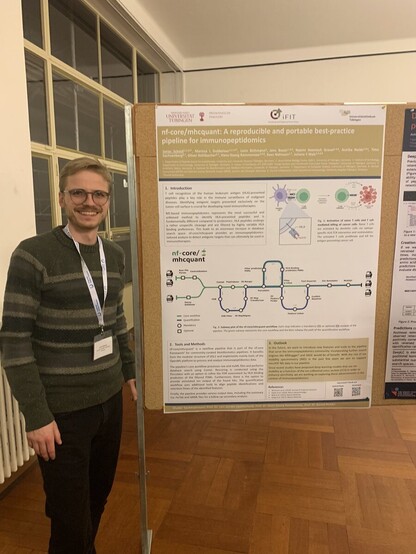Wout Bittremieux · @wout
133 followers · 66 posts · Server sigmoid.socialImmunopeptidomics data analysis is very challenging:
- A massive search space has to be considered (all subsequences of the proteins under consideration).
- Immunopeptides have different characteristics than standard tryptic peptides (non-tryptic peptide termini, predominantly singly charged).
This leads to low spectrum annotation rates in #immunopeptidomics. 😥
Wout Bittremieux · @wout
133 followers · 66 posts · Server sigmoid.socialOur work on fragment ion intensity prediction for the analysis of timsTOF #immunopeptidomics data is now online on #bioRxiv: https://www.biorxiv.org/content/10.1101/2023.07.17.549401v1
Check out this great effort by Charlotte Adams, who basically learned #DeepLearning/#MachineLearning from scratch for this project.
Thread. 👇
#immunopeptidomics #biorxiv #deeplearning
Wout Bittremieux · @wout
131 followers · 60 posts · Server sigmoid.socialThe slides from my presentation at the #BSPREUPA2023 conference on timsTOF fragment ion intensity prediction for #immunopeptidomics are available here: https://doi.org/10.5281/zenodo.8163554
Fantastic work by Charlotte Adams. Stay tuned for the full preprint very soon.
#bspreupa2023 #immunopeptidomics
nf-core · @nf_core
344 followers · 209 posts · Server mstdn.scienceRT @LabWalz
We took part in the #EuBIC2023 developers meeting and presented @nf_core /mhcquant - a #nextflow pipeline for processing #immunopeptidomics data!
#eubic2023 #nextflow #immunopeptidomics


